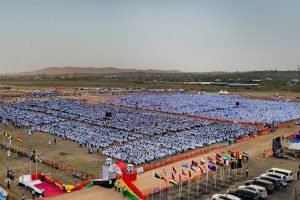Treatment of Relatives
Most people suffer from the failing that when they marry and set up house for themselves, they begin to neglect their parents. The Holy Prophet(sa), therefore, laid great stress upon the meritoriousness of serving one’s parents and treating them with kindness and consideration. Abu Huraira (ra) relates:‘ A man came to the Holy Prophet (sa) and asked to be told who was most deserving of kind treatment at his hands. The Prophet replied: “Your mother”. The man asked, “And next to her?” The Prophet (sa) repeated, “Again thy mother”. The man asked a third time, “And after my mother?” and the Prophet(sa) again replied, “Still thy mother”, and when the man asked him a fourth time, he said: “After her thy father and after him thy nearest relatives and after them thy more remote relatives.” The Prophet’s (sa) own parents and grandparents had died while he was still a child. The parents of some of his wives were, however, alive and he always treated them with great consideration and deference. On the occasion of the surrender of Makkah when the Holy Prophet (sa) entered the town as a victorious general, Abu Bakr (ra) brought his father to meet him. He said to Abu Bakr (ra): “Why did you trouble your father to come to me? I would gladly have gone to him myself”(Halbiyya, Vol. 3, p. 99). One of his sayings was: “Unlucky is the man whose parents live to old age and he fails to earn paradise even then”, meaning that the service of one’s parents particularly when they reach old age attracts the grace and favour of God and, therefore, a person to whom is afforded the opportunity of serving his aged parents and who avails himself of the opportunity to the full is bound to become confirmed in righteous ways and a recipient of the grace of God.1
End Notes
- Hazrat Mirza Bashiruddin Mahmud Ahmad (ra), Life of Muhammad (sa) (Tilford, Surrey: IslamInternational Publications, 2014), 233-234.




Add Comment